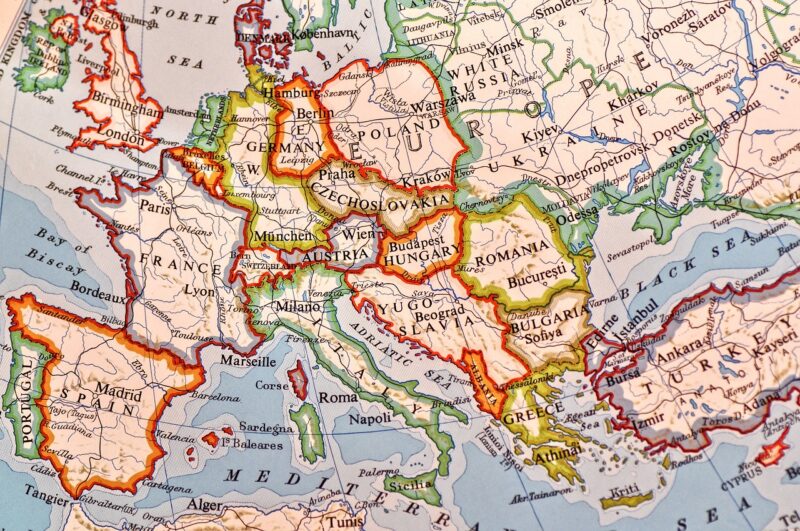
Geography has long been a foundational aspect of political science and economics, shaping the relationships between nations and influencing alliances. From trade routes to shared resources, the Earth’s physical landscape dictates how countries interact and organize themselves on the global stage. In this article, we will explore the multifaceted ways geography influences economic and political alliances, examining historical examples, contemporary case studies, and possible future trends.
1. Understanding Geography’s Role in Alliances
To comprehend the dynamics of economic and political alliances, we must first understand what geography entails. Geography includes not only the physical layout of countries but also their demographic, cultural, and resource-related characteristics. These factors collectively influence how nations view one another and decide to forge alliances.
For instance, two neighboring countries may collaborate economically if they share natural resources. Conversely, if the geographical proximity leads to competition for those resources, tension may arise, influencing their political affiliations.
Geographical factors can affect:
- Natural Resources: Countries rich in oil, minerals, or arable land may form alliances to secure trade routes and ensure resource supply chains.
- Geological Barriers: Mountain ranges or oceans can separate nations and influence the likelihood of forming alliances or engaging in conflict, leading to strategic partnerships.
- Trade Routes: Geographic locations that are on or near significant trade routes (such as the Silk Road) can enhance economic ties and lead to lasting political alliances.
2. Historical Perspectives: Geography Shaping Alliances
Historically, geography has played a crucial role in forming political and economic alliances. Consider the following examples:
The Roman Empire
The Romans leveraged their geographical position in the Mediterranean Sea to build a vast trade network and military alliances with neighboring states. By controlling key trade routes and establishing settlements, Rome secured its economic interests and facilitated military dispatch.
The Cold War
During the Cold War, geography influenced the formation of alliances such as NATO and the Warsaw Pact. Countries aligned themselves based on their geographic closeness to either the US or USSR. For instance, Western Europe sought alliances with the US for protection against the Eastern Bloc, highlighting how geography affected both political strategy and economic necessity.
3. Contemporary Case Studies: Geographic Influence Today
Current geopolitical events continue to showcase how geography affects economic and political alliances:
The European Union (EU)
The EU exemplifies how geographical proximity fosters economic cooperation and political alliances. Countries within the EU enjoy reduced tariffs, open borders, and collective bargaining, which reinforces interdependence. Geographic factors like the proximity of trade partners lead to stronger ties, influencing political decisions and unifying policies.
The South China Sea Disputes
The geopolitical tension in the South China Sea stems from territorial disputes over maritime routes rich in resources. Countries like Vietnam, the Philippines, and China have engaged in strategic alliances based on shared interests in the region’s resources, as geographical claims dictate the conversations around economic opportunities and security partnerships.
4. The Future: Geopolitics and Environmental Considerations
As climate change continues to reshape our planet, geography will further influence future alliances. Nations may find themselves forming coalitions over shared interests in environmental policies or to secure sustainable resources. For example:
Arctic Region Alliances
As the Arctic ice melts, new shipping routes are opening, and previously untapped resources are becoming accessible. Countries bordering the Arctic are beginning to forge alliances to navigate these new opportunities while managing the environmental impact. Such collaborations may lead to treaties governing resource use and environmental protection.
Water Scarcity Alliances
Regions experiencing water shortages, such as parts of the Middle East and North Africa, may rely increasingly on geographical ties to form alliances aimed at ensuring water access and managing shared water sources. Alliances formed on the basis of geographical necessities may influence regional politics significantly.
5. Conclusion: The Inextricable Link Between Geography and Alliances
In conclusion, geography plays an undeniable role in shaping both economic and political alliances across the globe. The interplay of natural resources, geographical barriers, trade routes, and historical contexts continues to define the global political landscape. As the world faces challenges like climate change and resource scarcity, it will be critical for nations to reconsider their alliances based on geographic realities.
Understanding the influence of geography on alliances will not only provide insights into current events but will also guide policymakers in navigating the future of international relations. By recognizing the importance of geographic factors, nations can strategically position themselves to foster collaborative, sustainable alliances that benefit all parties involved.








